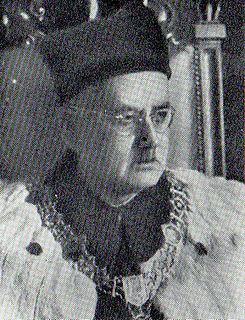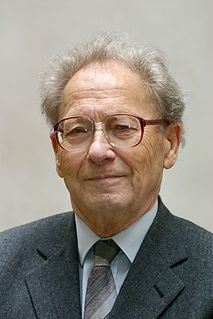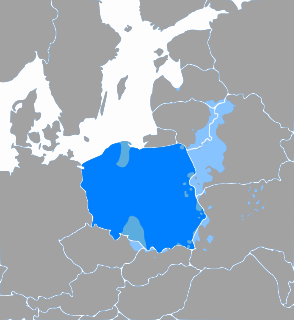
Kashubian or Cassubian is a West Slavic lect belonging to the Lechitic subgroup along with Polish and Silesian. Although often classified as a language in its own right, it is sometimes viewed as a dialect of Pomeranian or Polish.

Sign languages are languages that use the visual-manual modality to convey meaning. Language is expressed via the manual signstream in combination with non-manual elements. Sign languages are full-fledged natural languages with their own grammar and lexicon. This means that sign languages are not universal and they are not mutually intelligible, although there are also striking similarities among sign languages.

Belarusian is an official language of Belarus, along with Russian, and is also spoken in Russia, Poland and Ukraine. Before Belarus gained independence from the Soviet Union in 1991, the language was only known in English as Byelorussian or Belorussian, transliterating the Russian name, белорусский язык Belorusskiy yazyk, or alternatively as White Ruthenian or White Russian. Following independence, it has acquired the additional name Belarusian.

Silesian or Upper Silesian is a West Slavic lect of the Lechitic group. Its vocabulary has been significantly influenced by Central German due to the existence of numerous Silesian German speakers in the area prior to World War II and after, until the 1990s.

Kazimierz Ajdukiewicz was a Polish philosopher and logician, a prominent figure in the Lwów–Warsaw school of logic. He originated many novel ideas in semantics. Among these was categorial grammar, a highly flexible framework for the analysis of natural language syntax and (indirectly) semantics that remains a major influence on work in formal linguistics. Ajdukiewicz's fields of research were model theory and the philosophy of science.
The romanization or Latinization of Ukrainian is the representation of the Ukrainian language using Latin letters. Ukrainian is natively written in its own Ukrainian alphabet, which is based on the Cyrillic script. Romanization may be employed to represent Ukrainian text or pronunciation for non-Ukrainian readers, on computer systems that cannot reproduce Cyrillic characters, or for typists who are not familiar with the Ukrainian keyboard layout. Methods of romanization include transliteration, representing written text, and transcription, representing the spoken word.
Grypsera is a distinct nonstandard dialect of the Polish language, used traditionally by recidivist prison inmates. It evolved in the 19th century in the areas of the Russian partition and the prison that is colloquially called Gęsiówka is said to be where it originated.
Old Polish language is the period in the history of the Polish language between the 9th and the 16th centuries, followed by the Middle Polish language.
Ę is a letter in the Polish, Lithuanian and Dalecarlian alphabets. It is used in Navajo to represent the nasal vowel. In Latin, Irish, and Old Norse palaeography, it is known as e caudata.

Modern sources on the Slavic languages normally describe the Polish language as consisting of four major dialect groups, each primarily associated with a certain geographical region, and often further subdivided into subdialectal groups :

Silesian Wikipedia is the Silesian edition of Wikipedia. It was started on 26 May 2008.

John Guzlowski is a Polish-American author.
A pan-Slavic language is a zonal constructed language for communication among Slavic people.
Middle Polish is the period in the history of the Polish language between the 16th and 18th centuries. It evolved from Old Polish, and gave rise to the Modern Polish.
Usus is a term referring to the common usage of linguistic units in a particular speech community. It may be used as one of the criteria of laying out prescriptive norms for standard language usage.
Jerzy Treder was a Polish philologist and linguist, focusing on Kashubian studies, among other interests. He was born in Biała Rzeka, Rumia, Poland. In 1987-1990 he was deputy director of the Institute of Polish Philology, Gdansk University.

Miroslav Komárek was a Czech historical linguist and professor emeritus of the Faculty of Arts at Palacký University in Olomouc. His academic publications focused on the morphology and phonology of the Czech language from the diachronic perspective.









